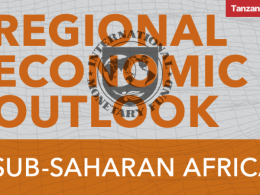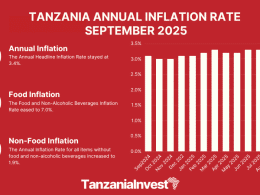The World Bank (WB) 2019 Tanzania Mainland Poverty Assessment report published in December 2019, notes that poverty decreased by 8% in 10 years, down from 34.4% in 2007 to 26.4% in 2018.
The report provides information on the causes and impact of poverty in a country and examines how public policies, expenditures, and institutions affect poor citizens.
Currently, Tanzania records 14 million poor people, up from 13 million in 2007. Moreover, the report notes that a significant proportion of the population remains vulnerable to falling into poverty and about half of the population continues to live below the international poverty line of USD 1.90 per person per day (in 2011 purchasing power parity.)
In addition to the reduction in basic needs poverty, extreme poverty (reflecting inability to meet minimum food needs) declined from 11.7% in 2007 to 8.0% in 2018. The depth of poverty also declined.
Most of the reduction in poverty was witnessed in rural areas, followed by urban areas outside the commercial capital Dar es Salaam.
The pace of poverty reduction, however, has slowed down since 2012. During 2007–12, poverty averaged a decline of 1% a year, but this lowered to 0.3% per year in 2012-18, as the impact of economic growth on poverty reduction has dampened in recent years.
During 2007-12 a 10% increase in gross domestic product per capita growth produced a 10% decline in the proportion of poor people. This has declined to 4.5% in 2012-18.
Going forward, the report suggests that structural transformation – the process where people move out of low productivity agriculture into more remunerable activities – will determine whether Tanzania can pull itself out of poverty.
The share of agriculture in total employment remains high (at 58%, reaching 79% among the poor) but it continues to contribute far less to value-added than these other sectors.
This is why the WB believes that despite the noticeable transition of labor from agriculture to industry and services, there is also a need for further market orientation and value addition in the agricultural sector.
In addition, the report recommends that Tanzania needs to invest in human capital and skills development of its current and future workforce while increasing the job generation by key sectors that drive growth.
This needs to be coupled with a better enabling environment that fosters small firms’ growth and survival chances, furthers agricultural transformation, and reduces vulnerability to negative domestic and international economic and weather shocks.
Bella Bird, World Bank Country Director for Tanzania, Malawi, Zambia, and Zimbabwe, commented: “Continued government efforts to improve living conditions have resulted in a sustained increase in access to basic services and improvements in human capital outcomes, which in turn have helped to reduce poverty. The sustained reduction in poverty is welcome news but it is important for Tanzania to accelerate the pace of poverty reduction as the number of poor people remains high.”
“Along with the reduction in poverty, the country is showing signs of a structural transformation,” said Nadia Belhaj Hassine Belghith, Senior Economist and co-author of the 2019 Tanzania Mainland Poverty Assessment. “More people are moving towards industry and services, reducing the overall share of employment in agriculture. Those who stay in agriculture are also diversifying towards non-farm wage and self-employment.”
Tanzania currently holds the fourth largest portfolio in the World Bank Africa region with 28 national projects with net commitments of about USD4.2b.
Tanzania also participates in seven regional projects with a total commitment amount of USD550.8m.










